The motherboard is the central nervous system of your computer. Each and every component has to communicate with the other components through the motherboard’s circuitry board, including the CPU, GPU, storage drive, and RAM. Motherboards used to be pretty generic decades ago but most of us never thought they would come so far that the performance will be directly or indirectly dependent on these PCBs.
In 2024, motherboards have a special place and priority in every gamer’s heart. Motherboards have come a long way, from offering basic component compatibility in the past to now offering overclocking support, beautiful RGB lights, onboard troubleshooting features, and high-bandwidth slots/ports, motherboards can make or break your computer.
The one major problem when choosing a motherboard is its complex design, which unlike a CPU or a GPU, doesn’t have specific criteria that can allow us to put them in a hierarchy easily. This is exactly why we put together this list of the best gaming motherboards for both Intel and AMD CPU owners, seeking to maximize their gaming potential without breaking the bank.
TCG’s Picks for the Best Gaming Motherboards in 2024
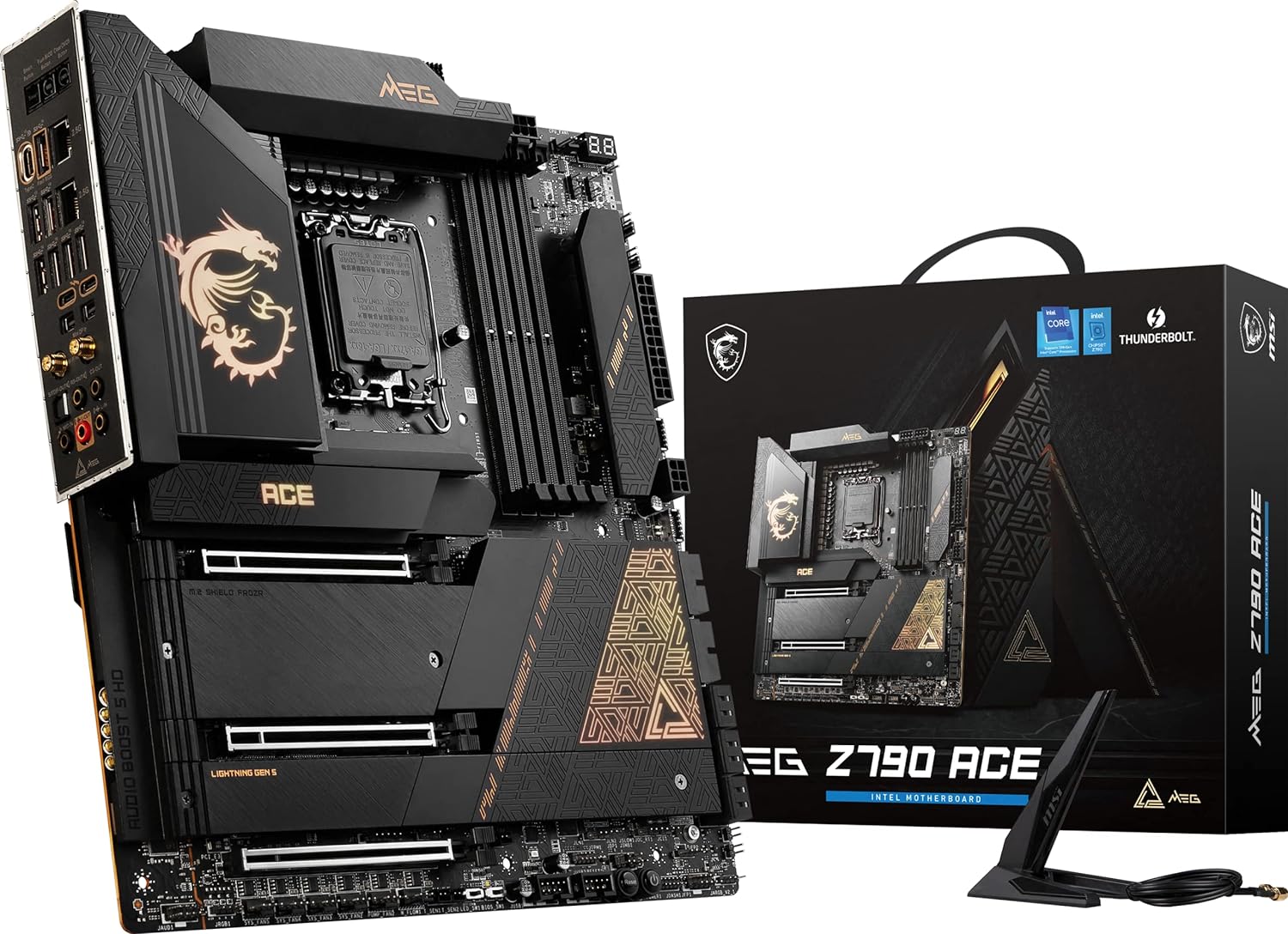
At half the price of flagship Z790 motherboards, the MEG Z790 ACE brings competitive specifications and support for intensive CPU and memory overclocking. The built-in RGB lighting and the brushed aluminum heatsinks all over the PCB improve its aesthetics and make it run cooler.
Socket: Intel LGA 1700
Z790 motherboards can be very expensive, especially if you are looking for premium VRM and connectivity options. MEG Z790 ACE is somewhat between the most expensive ones and the mid-range offerings. The number one requirement for most enthusiast users is the ability to overclock their CPUs to their full potential without being throttled due to stability or overheating. The MEG Z790 ACE is a monster at overclocking due to the incredible 24+1+2 phase design, that tends to offer incredible stability even with the flagship CPUs like Intel Core i9 14900K/KS.
It doesn’t disappoint in any area even a bit. Having an E-ATX form factor allows it to host a lot of slots, ports, and headers for components like expansion cards, memory modules, storage drives, fans, and cooling solutions. Everything is placed at the right spot and the headers, in particular, are spread throughout the PCB to allow easy connection. When the aluminum shields and heatsinks start to exhibit their RGB lighting, the motherboard looks like a piece of art. Good enough, the RGB lighting isn’t there to cover up its flaws because it has almost none. The I/O is filled with the latest generation USB ports, WiFi, and BIOS buttons, and the PCB itself hosts a bunch of troubleshooting options like Q-Code, Debug LEDs, Power, and Smart buttons.
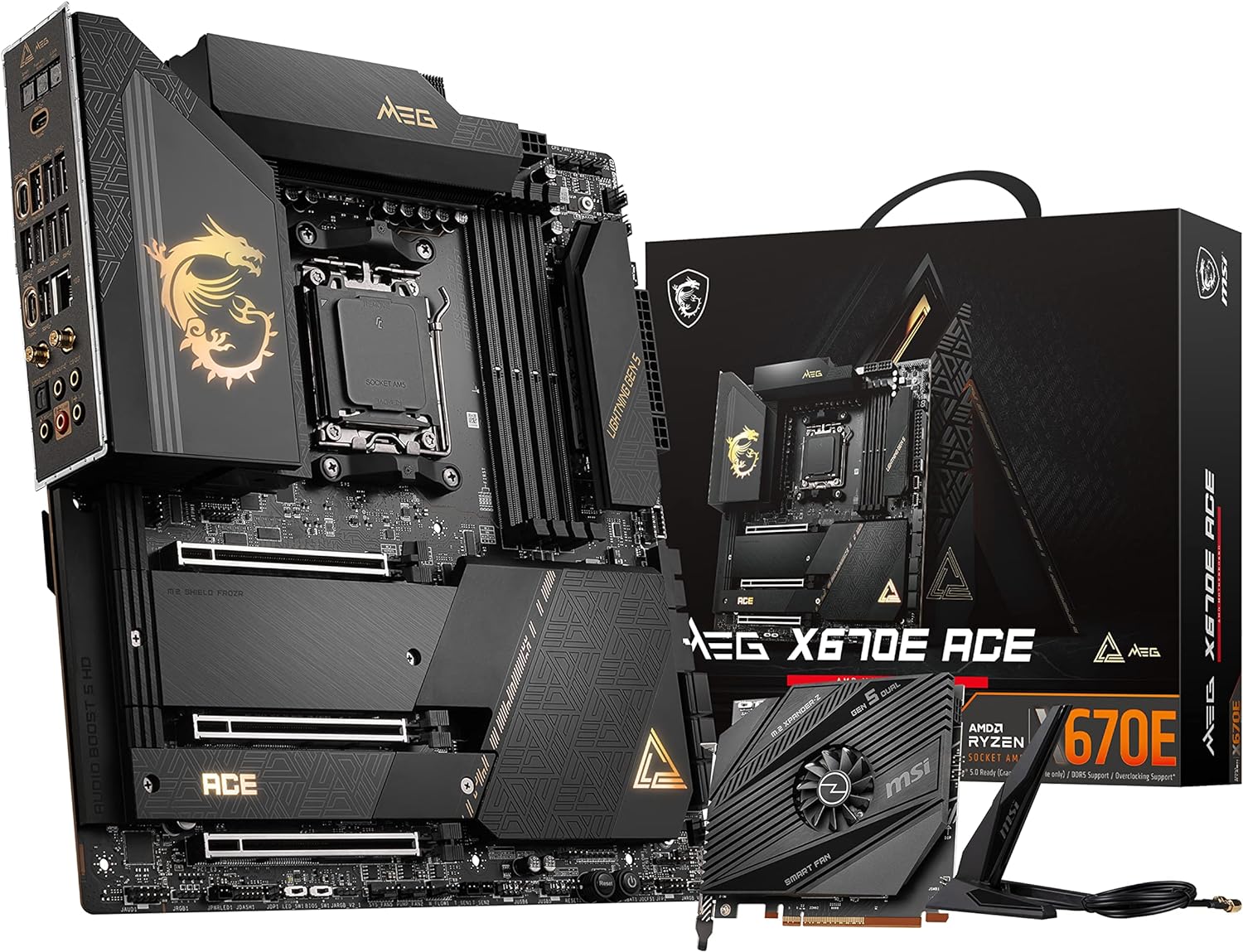
The MEG X670E ACE is technically identical to the Z790 motherboard in many areas except for its socket and the chipset. Its robust power delivery, exceptional connectivity features, and premium cooling design can elevate the performance to the next level.
The MSI MEG X670E ACE not only looks the same as the Z790 ACE but is also identical in many of its specifications. Except for minor physical changes, the X670E also brings a different chipset and a different socket to support AMD’s Ryzen 7000 and 8000 series processors. It’s suitable for high-end AMD CPUs like Ryzen 7900X or 7950X, which are very demanding and require top-notch stability to maintain 5.0GHz frequency on all cores. This will be handled by its 22+2+1 power phase VRM that is coupled with dense and grooved aluminum heatsinks with a copper heat pipe embedded, making sure overheating remains at bay.
The X670E chipset is known for its native PCI-E Gen 5.0 support and the motherboard offers plenty of PCI-E and M.2 connectors to ensure you can take advantage of the upcoming generation of graphics cards and the fastest SSDs available on the planet. However, it’s unusual to see that all the PCI-E slots here share the bandwidth. So, if you were to install a GPU and populate the second and the third PCI-E x16 slots, the bandwidth of the primary slot reduces to x8 from x16. Thankfully, it won’t limit the potential of the modern gaming GPUs but populating the third PCI-E x16 will definitely disable the rear USB 3.2 Gen 2×2 20Gbps Type-C port.
Except for this part, there is nothing else that looks flawed, particularly when the cooling, connectivity, and onboard options are plenty. An additional M.2 slot is also placed right beside the DIMM slots and gives screwless access for SSD installation.
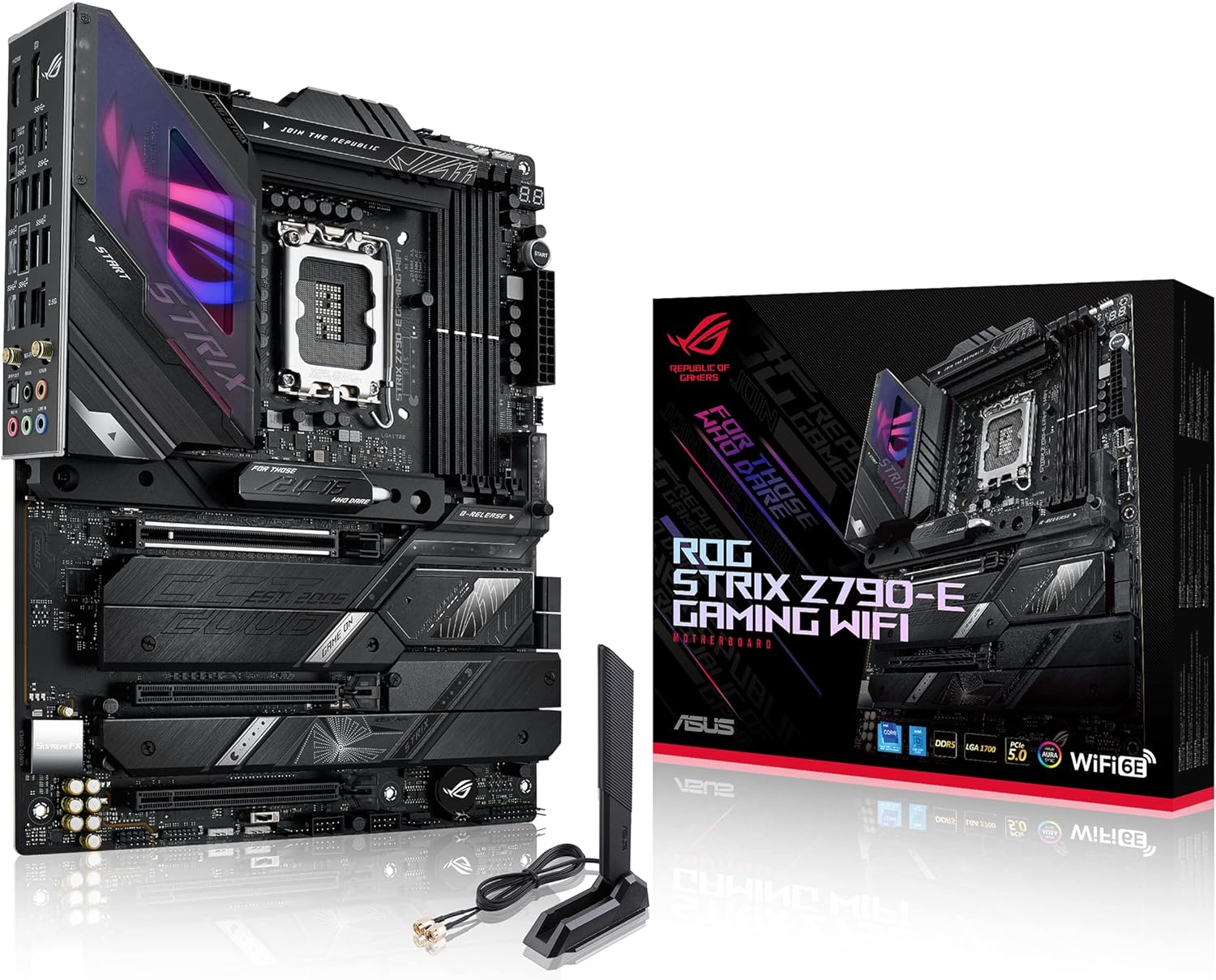
The personality and functionality of Z790-E Gaming can enhance both the looks and performance of your gaming build. From a robust VRM and multiple passive heatsinks for cooling, to support for modern components, the Strix Z790-E gets the job done at a sub-$350 price point.
The ROG Strix Z790-E is the sweet spot for enthusiasts that neither breaks the bank nor limits your PC’s performance in any way. Unless you are looking to break overclocking world records, the Z790-E is sufficient for the most part, including intensive overclocking. It is still a bit expensive at around $350 but it offers a premium design with mesmerizing RGB LEDs on the I/O shroud and has plenty of heatsinks to cool various parts of the motherboard. The heatsinks on the VRM are properly grooved for maximum airflow and will keep the VRM cool in intensive overclocking sessions.
Best for mid-range and high-end processors like Core i5 14600K or i7 14700K, the Strix board is suitable for building a $2000-$3000 gaming build, due to its great 18+1 power phase VRM, excellent component compatibility, a plethora of USB ports, onboard troubleshooting features, and numerous headers for PC fans and AIO solutions. Except for its weird sharing of bandwidth between the primary PCI-E x16 and M.2 slots, the motherboard remains an almost flawless choice for enthusiasts.
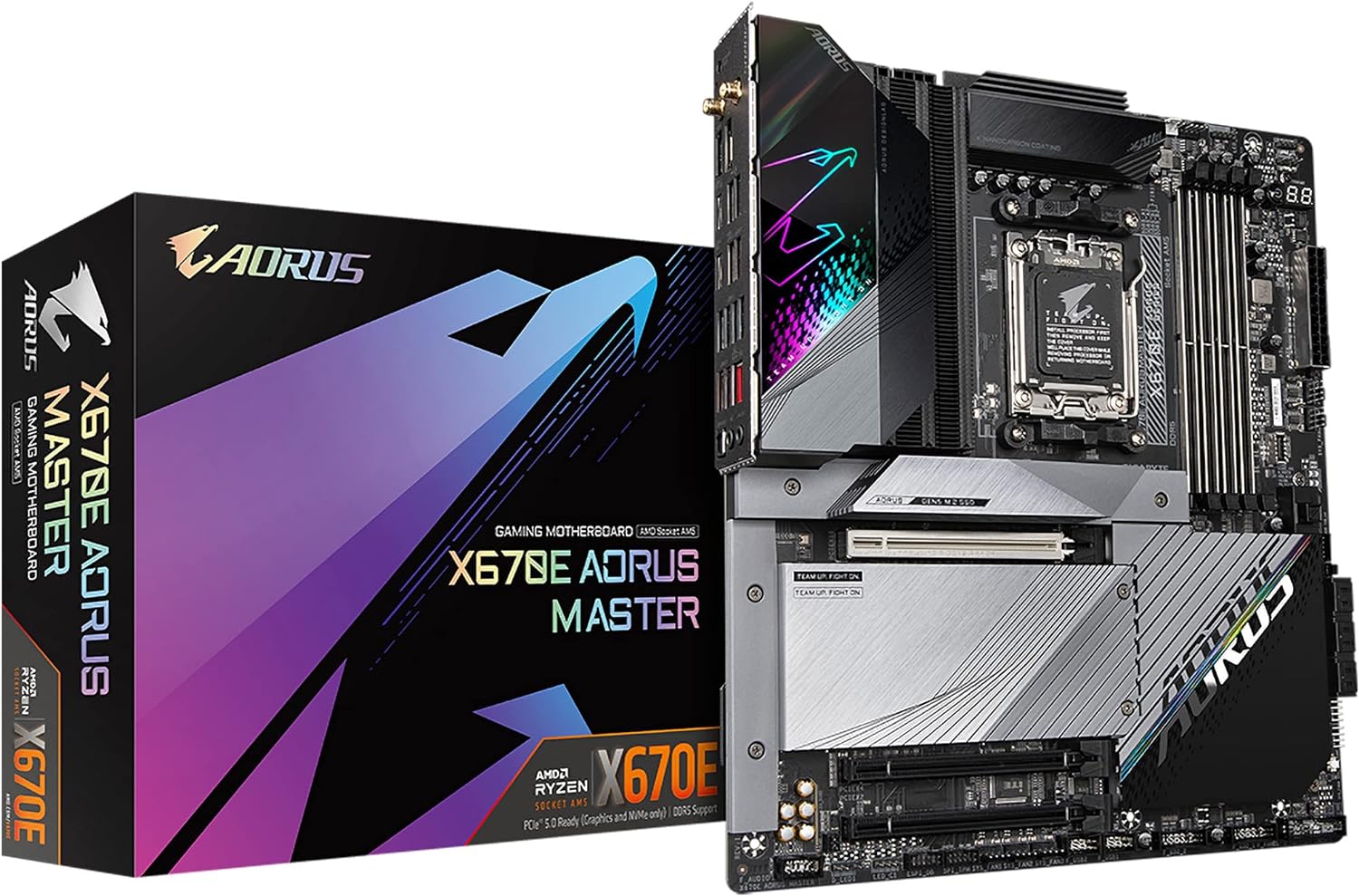
The personality and functionality of Z790-E Gaming can enhance both the looks and performance of your gaming build. From a robust VRM and multiple passive heatsinks for cooling, to support for modern components, the Strix Z790-E gets the job done at a sub-$350 price point.
For AMD users, the Gigabyte X670E Aorus Master is a high-end board at a mid-range motherboard price. Gigabyte typically brings a lot of budget offerings due to which, the mid-range and higher-end boards tend to provide competitive functionality at a lower price. Of course, some Gigabyte X670E motherboards are ridiculously priced as well but the Aorus Master is a reasonable choice for enthusiast gamers, looking to maximize their CPU’s overclocking potential and harness the PCI-E Gen 5.0 speeds.
On top of a robust 16+2+2 power phase VRM for great stability, the board has distinguished heatsinks for the VRM components. Usually, you will see standard grooved aluminum heatsinks on most boards but on the Aorus Master, the heatsink is quite large with numerous fins, allowing maximum heat dissipation due to the increased surface area. The I/O shroud on top of that hosts RGB LEDs, which can be personalized using RGB Fusion. For mid-range to high-end CPUs, the X670E Aorus Master is almost as good as the MSI ACE exception for some downgrades but overall, the appealing design and the rich connectivity for a sub-$400 price point make it a top contender.
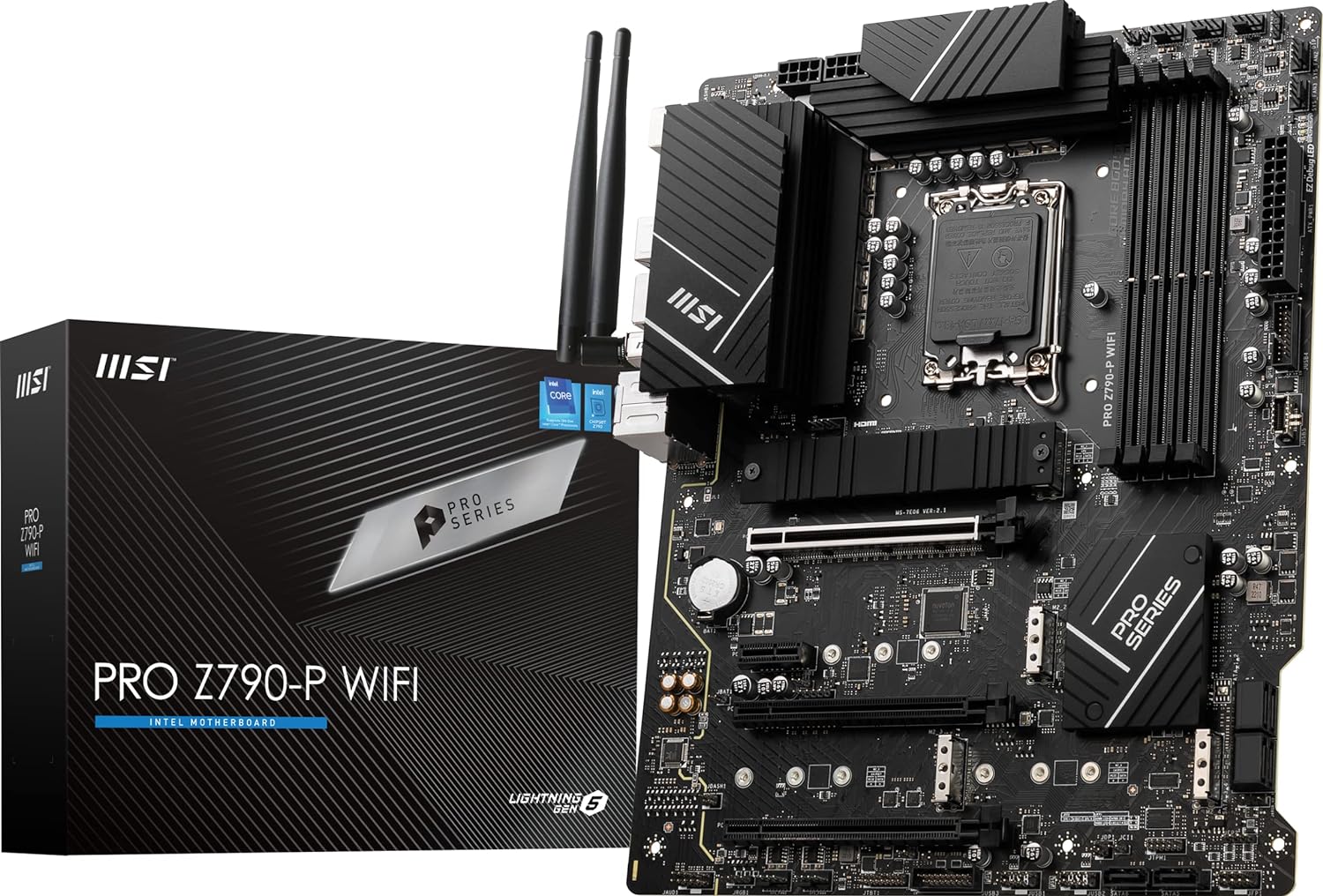
This sub-$200 motherboard enables overclocking of the latest Intel 12th/13th/14th gen processors, provides a built-in Wi-Fi adapter, and has plenty of USB ports for peripheral connection. It’s fairly standard in other areas but provides PCI-E 5.0 support out of the box.
The vast majority of gamers often settle with budget components. The motherboard is one of the parts that most users tend to cheap out due to its insignificant impact on gaming. It’s true that a motherboard affects the overall performance of most components but for users who are on a tight budget, investing in a better CPU or GPU should be the priority. Thankfully, even with $200 in hand, you won’t be limiting your gaming performance if you buy the MSI PRO Z790-P WiFi. This board supports CPU and memory overclocking out of the box and has Intel XMP 3.0 support.
The VRM comprises a 14+1+1 power phase design, which can take care of processors like Intel Core i3s and i5s. We don’t recommend going with higher-end processors unless you don’t have the urge to overclock them to test their limits. This ATX board offers EZ Debug LEDs on the top for easy troubleshooting and a BIOS flash button at the I/O for easy BIOS upgrade. Connectivity is somewhat average, boasting a couple of USB 2.0 and 3.2 ports, along with a Type C Gen 2×2 port, and built-in WiFi. While there are some premium B760 motherboards available for the same price, it’s always better to choose the Z790 chipset due to its CPU overclocking support.
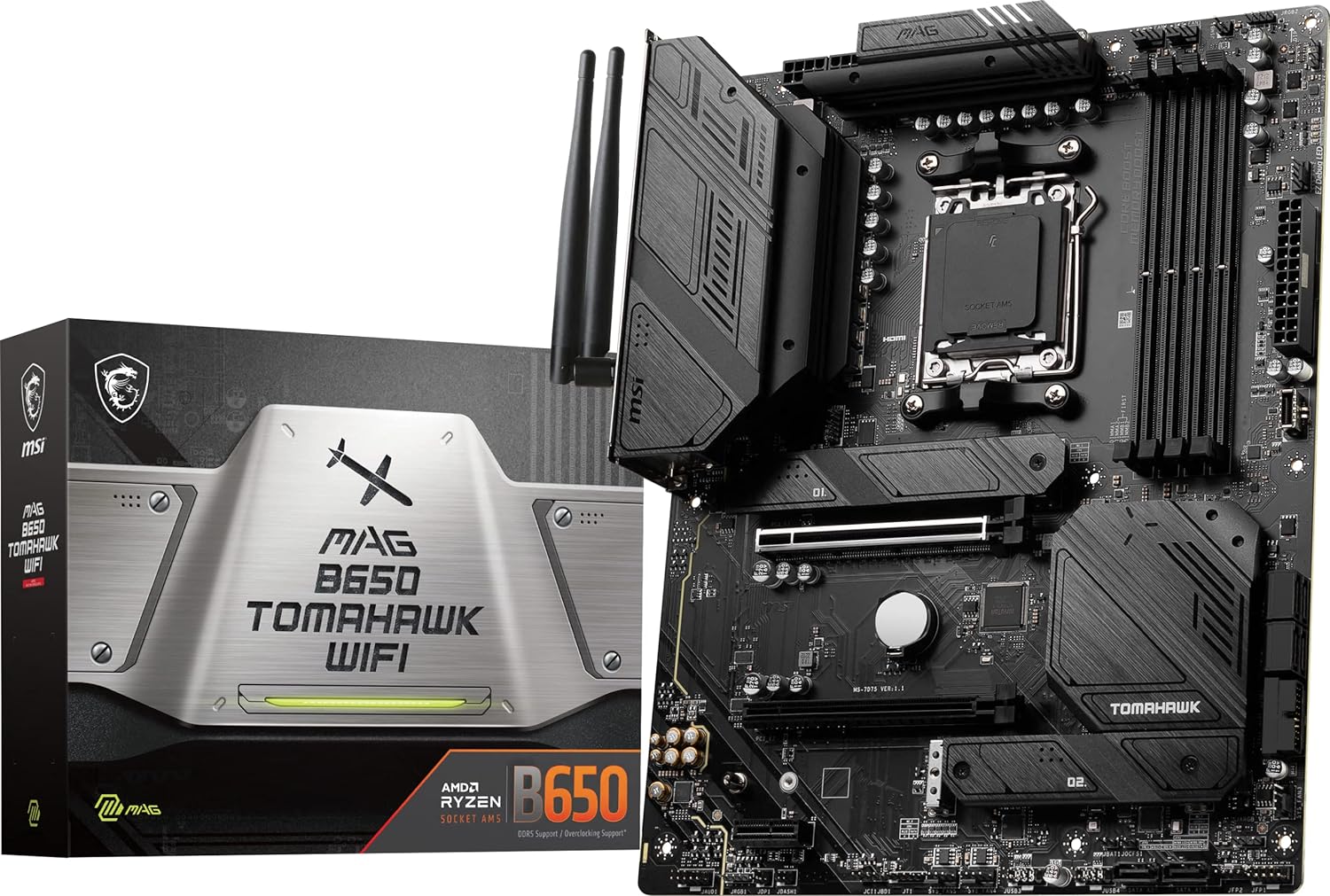
Supporting the latest Zen 4-based CPUs and APUs, the MAG B650 Tomahawk WiFi is a killer motherboard on a budget, providing WiFi, Bluetooth, multiple USB ports, and overclocking support for the CPU and RAM. It also has some basic troubleshooting features and plenty of slots/ports for various devices.
MSI’s ability to equip its budget motherboards with EZ Debug LEDs is commendable. These debug LEDs are a lifesaver when something goes wrong with your PC and it refuses to start. By turning on one of the four LEDs, you can easily figure out what component is troubling your system for booting up. MAG B650 Tomahawk WiFi has these located on top but unfortunately, there aren’t any power/reset buttons like on premium motherboards. It is not a deal breaker for many, particularly when you are not buying this motherboard for experimenting with the clock speeds of your CPU too frequently.
Still, the board allows you to overclock your CPUs or APUs along with DDR5 memories. It’s best for CPUs like Ryzen 5 7600X or even 7700X and has support for modern components. Except for its lack of PCI-E 5.0 support, you are ready to rock. At the I/O, you will find a lot of USB ports for peripheral connection, Wi-Fi, and a Flash BIOS button for upgrading BIOS. There is room for improvement but for $200, it’s up to the mark for modern gaming PCs.
What to Look for When Buying a Gaming Motherboard?
Form-Factor: Decide how big or small your motherboard should be. This should be in accordance with the clearance in your chassis. Check your case’s compatibility with the motherboard form factors and choose accordingly. If your case doesn’t have any compatibility issues with the most popular form factors, it’s time to decide what specific features you are looking for. With mini-ITX and Micro-ATX boards, you will be limited in upgrades as these boards feature fewer slots and ports compared to the standard ATX and E-ATX motherboards.
Compatibility: Both Intel and AMD have their own platforms and you cannot use a processor from one on a motherboard from the other company. On top of that you should also check the socket and the compatible list of processors. This is essential if you don’t want your monitor showing a black screen. After checking the compatibility of CPUs, check what and how many components like GPU, storage drives, or cooling solutions can be installed on your motherboard.
Chipset: Chipset controls a lot of functions on a motherboard. From I/O to PCI-E slots, the chipset decides how much you can upgrade your system. It also decides whether you will be able to overclock your CPU or not. For the latest Intel unlocked CPUs, you can choose Z690 or Z790 chipset and for AMD chips, the chipsets for overclocking to use are B650 and X670. Other chipsets don’t allow overclocking but they might offer competitive functionality in other areas.
Cooling: Look for big and grooved heatsinks on the VRM and the chipset. Good motherboards provide multiple aluminum heatsinks all over the PCB to ensure a stable and cooler operation. Make sure the motherboard has at least three chassis fan headers and one AIO header apart from the CPU_fan header. The more headers there will be, the more fans you will be able to install inside your chassis.
Onboard Features: Onboard features are often overlooked when buying a gaming motherboard. These include troubleshooting and basic function buttons. Motherboards that come with Power and Reset buttons are easier to work with. Debug LEDs and Q-Code are some more good options to troubleshoot your system. On top of that, if your motherboard has Clear CMOS and BIOS Flash buttons, it’s going to be highly convenient in most cases.
FAQ
Do I need a high-end motherboard for gaming?
Not necessarily. High-end motherboards are often marketed to enthusiasts who want to push their CPU’s overclocking limits and want the next-gen connectivity. A budget or a mid-range motherboard will be satisfactory in most cases, including gaming.
Can I overclock my CPU with any gaming motherboard?
No. You must use an unlocked chipset to overclock your CPU. Chipsets like Z690, and Z790 for the latest Intel 12th/13th/14th gen processors, and B650, and X670 for AMD Zen 4 processors are required for overclocking.
Is built-in Wi-Fi necessary on a gaming motherboard?
Built-in Wi-Fi is very convenient for connecting to the wireless internet router for access to the internet. It’s not necessary for gaming if you are using an ethernet cable but is pretty handy in most cases.
